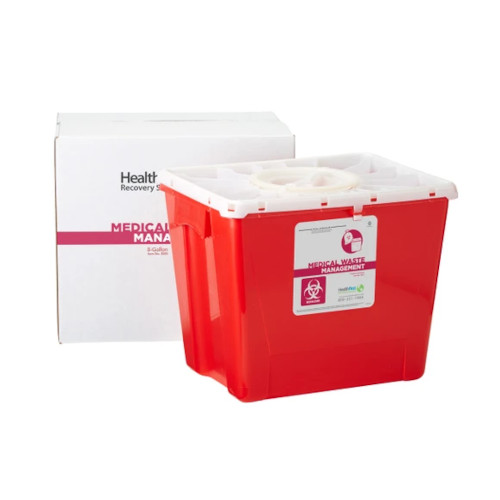Local Dedication: Your Community's Leading Medical Waste Removal Near Me
Local Dedication: Your Community's Leading Medical Waste Removal Near Me
Blog Article
Understanding the Different Sorts Of Waste Disposal Methods
In the realm of waste management, the variety of disposal methods available today is vast and varied, each method offering a distinct function in attending to the difficulty of waste disposal. click here. From recycling approaches that intend to give new life to products, to the intricate processes of unsafe waste monitoring, the landscape of waste disposal is complicated yet critical for environmental sustainability. Understanding the subtleties of these different strategies not just sheds light on the value of liable waste monitoring yet also motivates us to reassess our strategy towards garbage disposal in a rapidly progressing world

Recycling Methods
Recycling approaches are essential for sustainable waste administration practices in both industrial and property settings. medical waste disposal. By carrying out effective recycling approaches, a significant quantity of waste can be diverted from landfills, saving natural deposits and lowering the environmental impact of manufacturing procedures
In household locations, curbside recycling programs play an important role in motivating families to different recyclable products from basic waste. Products such as paper, plastics, glass, and steels can be arranged and collected for processing right into brand-new products, reducing the need for resources and energy-intensive production procedures.
Industrial facilities likewise rely upon reusing approaches to decrease waste generation and advertise a circular economy. By implementing closed-loop systems, services can reuse materials within their manufacturing processes, reducing expenses and environmental impact. medical waste disposal. In addition, industrial recycling programs frequently include partnerships with specialized reusing centers to ensure that materials are appropriately arranged, processed, and rehabilitated right into the supply chain
Composting Strategies

Oxygenated static stack composting entails mixing natural waste materials in a huge stack and regularly turning it to make certain correct aeration. This technique is effective for massive composting operations. On the various other hand, vermicomposting makes use of earthworms to break down raw material into nutrient-rich spreadings. This method is well-suited for smaller-scale operations and houses.
In-vessel composting includes placing natural waste in a closed container with controlled problems for temperature and oygenation. Windrow composting includes forming long rows of natural waste and routinely turning them to advertise decay - medical waste disposal.
Landfill Disposal
Land fill disposal is a commonly made use of technique for managing waste that can not be recycled or composted. It entails hiding waste in marked areas of land, with correct safety measures to avoid environmental contamination. Land fills are crafted facilities designed to separate waste from the surrounding setting. The waste is compressed and covered with soil everyday to minimize smells, prevent bugs, and minimize the spread of trash. Modern garbage dumps are outfitted with protective linings and monitoring systems to prevent leakage of damaging materials right into the soil and groundwater. Methane gas, a result of decomposing organic waste in land fills, is frequently accumulated and utilized as a source of renewable resource. Regardless of improvements in land fill technology, problems continue to be about the lasting environmental impacts, such as groundwater contamination and greenhouse gas emissions. Efforts to decrease dependence on garbage dumps consist of promoting waste decrease, recycling, and exploring alternate garbage disposal methods to minimize the ecological footprint connected with traditional land fill disposal methods.

Waste-to-Energy Incineration
Incineration of waste for energy generation is an approach significantly being considered as an alternative to typical land fill disposal methods. Waste-to-energy incineration includes the burning of waste products at high temperatures, commonly in specialized facilities designed to create electricity or warm through the process - click here. This strategy not just minimizes the volume of waste that would otherwise be predestined for land fills but also utilizes the warmth created throughout incineration to produce power
One of the vital benefits of waste-to-energy incineration is its capability to create electrical power while decreasing the ecological influence compared to standard garbage dump disposal methods. By converting waste into power, this technique helps in lowering greenhouse gas discharges and reliance on nonrenewable fuel sources for energy generation. Furthermore, waste-to-energy facilities are furnished with innovative air pollution control modern technologies to minimize possible toxic wastes released during the burning process.
Contaminated Materials Administration

Taking into consideration the crucial importance of liable waste administration practices, especially in the realm of ecological sustainability, the view publisher site emphasis now moves in the direction of the complex domain of Hazardous Waste Administration. Dangerous waste postures considerable risks to both human wellness and the atmosphere, demanding specialized handling and disposal methods. Common instances of dangerous waste consist of chemicals, batteries, chemicals, and electronic waste.
Hazardous Waste Management involves the identification, collection, transportation, treatment, and disposal of materials considered potentially hazardous or hazardous. This process needs adherence to rigorous regulations and guidelines to minimize damaging influence on environments and public wellness. Different approaches are used in handling contaminated materials, including recycling, safe and secure garbage dumps, encapsulation, and chemical therapy.
Proper Contaminated Materials Administration is essential for avoiding contamination of soil, water resources, and air contamination. It is necessary for sectors, laboratories, medical care centers, and various other generators of contaminated materials to carry out robust management techniques, training programs, and emergency feedback prepares to guarantee the secure handling and disposal of these materials. Failing to handle contaminated materials properly can have far-ranging consequences, underscoring the relevance of liable and thorough techniques in this field.
Conclusion
Finally, garbage disposal strategies play an essential role in managing and reducing the influence of waste on the setting. From recycling and composting to garbage dump disposal and waste-to-energy incineration, each technique has its own advantages and constraints. Correct administration of dangerous waste is also essential to secure public health and wellness and the atmosphere. It is important for people and industries to comprehend the various garbage disposal strategies readily available and select one of the most proper technique for sustainable waste administration.
In the world of waste administration, the range of disposal techniques readily available today is huge and varied, each method offering an unique purpose in addressing the obstacle of waste disposal. click here. From reusing techniques that aim to give brand-new life to materials, to the elaborate processes of hazardous waste monitoring, the landscape of waste disposal is complex yet crucial for ecological sustainability. Recognizing the nuances of these different strategies not only sheds light on the relevance of accountable waste management yet likewise prompts us to reassess our technique in the direction of waste disposal in a rapidly progressing world
Initiatives to lower dependence on garbage dumps consist of promoting waste decrease, reusing, and exploring different waste disposal approaches to reduce the environmental impact associated with typical garbage dump disposal techniques.
It is essential for industries and individuals to recognize the various waste disposal methods readily available and select the most ideal technique for lasting waste management.
Report this page